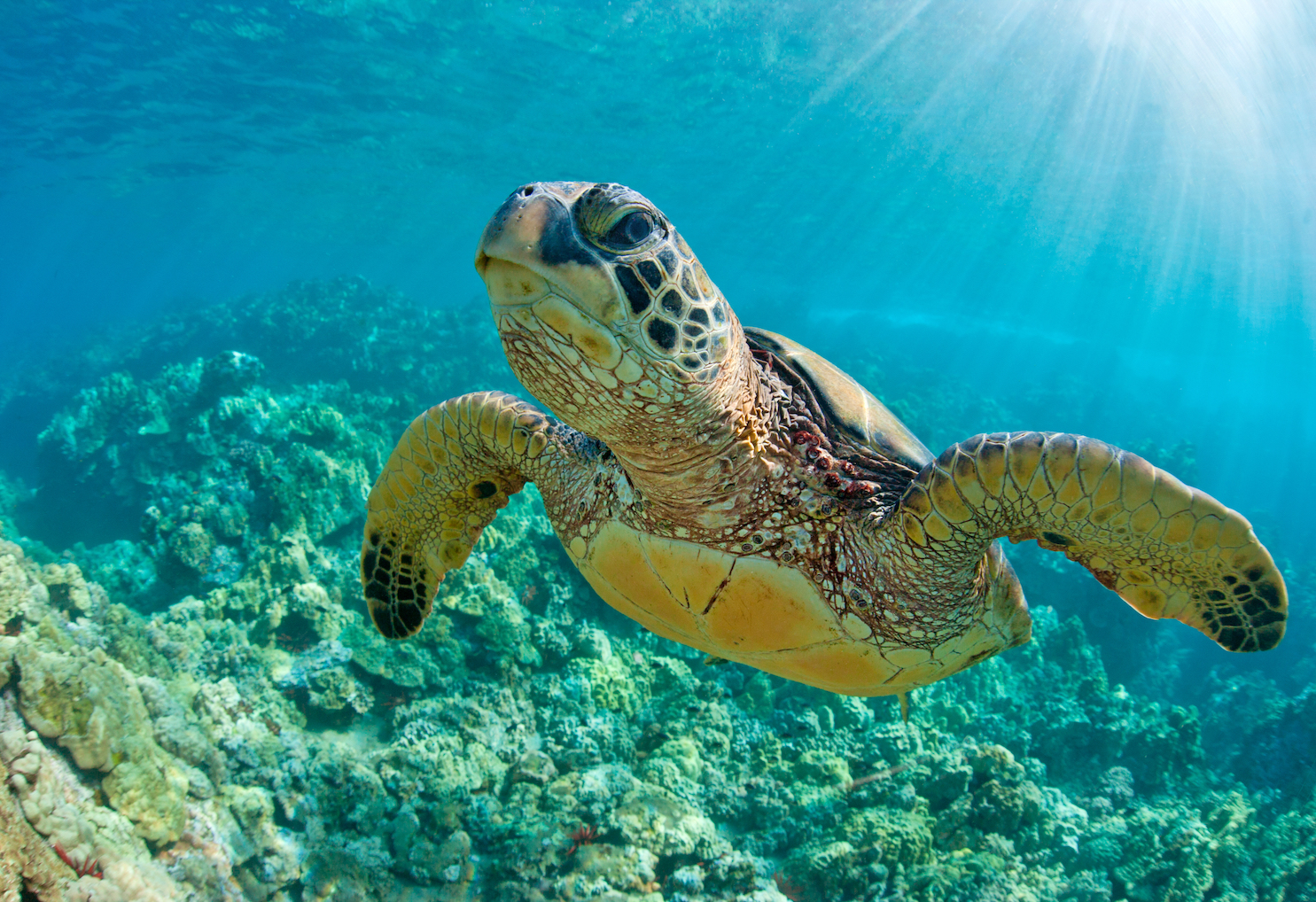
Sea turtles use their flippers as hands to eat food
Even though sea turtles have flippers for the purpose of guiding their movement, a new study has revealed that they also use their flippers to handle prey.
The researchers found that this behavior, which was thought to be unlikely in marine tetrapods, is very widespread. Furthermore, sea turtles may have begun co-opting their flippers as far back as 70 million years ago.
Study co-author Dr. Kyle Van Houtan is the Director of Science at Monterey Bay Aquarium.
“Sea turtles don’t have a developed frontal cortex, independent articulating digits or any social learning,” said Dr. Van Houtan.”And yet here we have them ‘licking their fingers’ just like a kid who does have all those tools. It shows an important aspect of evolution – that opportunities can shape adaptations.”
The research team used crowd-sourced photographs and videos to search for various ways that sea turtles use their limbs. While this type of behavior has been discovered in other marine mammals such as walruses, it not been previously documented in sea turtles.
The study revealed that sea turtles use their flippers for a variety of foraging tasks. The scientists found many informative images, including a loggerhead rolling a scallop on the floor of the ocean and a green turtle holding a jelly.
“Sea turtles’ limbs have evolved mostly for locomotion, not for manipulating prey,” said lead author Jessica Fujii. “But that they’re doing it anyway suggests that, even if it’s not the most efficient or effective way, it’s better than not using them at all.”
The experts were surprised to find that sea turtles were co-opting their flippers, primarily due to the fact that they are considered to have simple brains and simple flippers. It raises the question of whether marine mammals are learning new behaviors through observation.
“We expect these things to happen with a highly intelligent, adaptive social animal,” said Dr. Van Houtan. “With sea turtles, it’s different; they never meet their parents. They’re never trained to forage by their mom. It’s amazing that they’re figuring out how to do this without any apprenticing, and with flippers that aren’t well adapted for these tasks.”
The study is published in the journal PeerJ.
—
By Chrissy Sexton, Earth.com Staff Writer
Image Copyright Fujii et al. shared under Creative Commons CC BY













